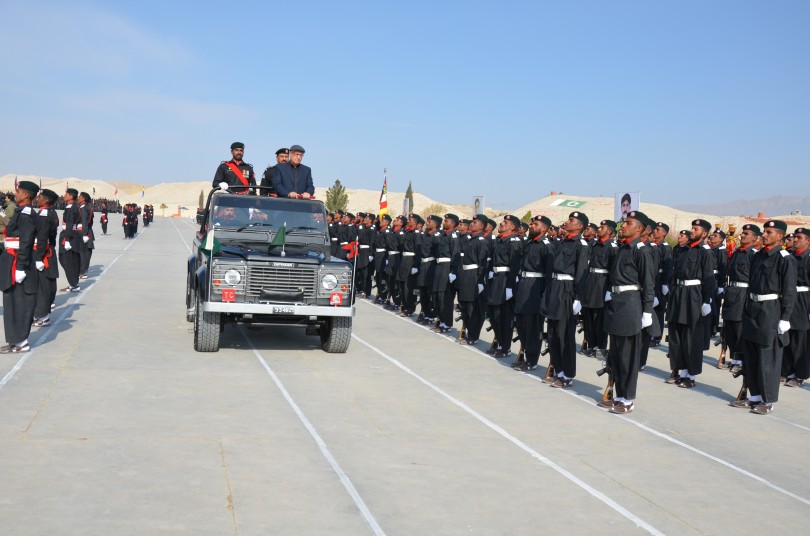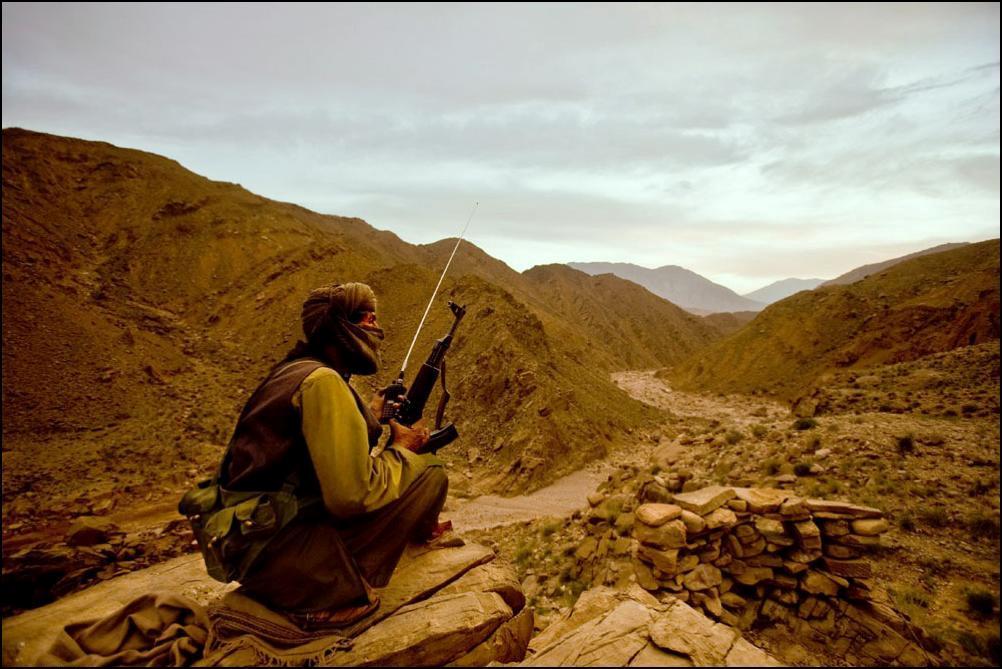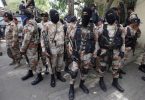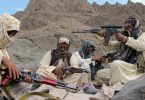The insurgency in Balochistan has become a permanent fixture in the Pakistani security culture. To date, four major uprisings have been quelled through heavy handedness of the past governments but the continuous attrition through the Parthian tactics of hit-and-run and death by a thousand cuts is wearing down the State.
The all-weather strategic partnership with China has shoved Gwadar in the fore. Located on the south-western Arabian Sea coastline of Pakistan, in Balochistan province, the deep-sea port city is situated near the Strait of Hormuz – the key energy shipping lane. Gwadar is the projected end point of China ambitious economic corridor in Pakistan, linking western China with the South Asia, Middle East and Africa.
The dire security situation of the Baloch province has prompted the military to raise a special security division, made up of nine army battalions under the command of a major general rank to secure Chinese developmental efforts in the region.
To emerge as a victor in this asymmetric warfare, the military must discard the heavy-handedness it has routinely favoured in its past dealings in Balochistan. Unlike the religiously motivated terrorists, ethnic groups are insidious and more difficult to dismantle. The political and social taint to their clamour gives them more credence vis-a-vis religious zealots. The strategic calculus and tactical thought-patterns of ethno-nationalist militants diverge remarkably from the religiously motivated groups like Taliban or Al-Qaeda, which the security forces have ousted from FATA. More pragmatism coupled with patience has been routinely displayed by the insurgent groups fighting for ‘real-world’ objectives rather than those who are supposedly fighting to uphold God’s will.
The tactical and operational principles of the Baloch insurgency are as follow:
- The continuation of political activities through banned nationalist outfits and leftist groups to humanize the insurgency, incitement of masses, and propaganda.
- Fighting a protracted war against the state actors, however arduous it is. State symbols, security apparatus, energy installations, and civilians from other provinces are lawful targets.
- The hit-and-run attacks executed using large numbers against a relatively fewer number of localized targets.
- Subsuming oneself in the local populace or cross the border in case of any dire threat from the security forces.
- Debasing the State by labelling the insurgents killed in military operations as the victims of ‘enforced disappearance’.
- Routine collaboration with the banned Sunni sectarian outfits, totally non-aligned with the communist ideals, to enhance fighting capacity.
To emerge as a victor in this asymmetric warfare, the military must discard the heavy-handedness it has routinely favoured in its past dealings in Balochistan.
Mr. Sharif, the baton wielder is an able strategist, an unconventional warfare tactician, whose unique training regimen is widely lauded for the results it produced in tribal agencies. Initially he dampened the resolve of militants, foremost by creating distrust-and-divide within their ranks, and later by launching a comprehensive joint military offensive. Based on the recommendations of security establishment, the government also lifted the presidential moratorium on executions as a punitive measure, and also permitted the setup of military courts to deal exclusively with terrorists. As a result, the terrorist attacks dipped by 30% in 2014.
However, the counter insurgency tacticians of Pakistan military must understand that the war in Baluchistan is ‘population-centric’, and therefore, the control of people’s hearts and minds is necessary. The separatists are able to carry on their guerilla activities because of their superior control on human terrain. It can be because of the widespread support for insurgents amongst the locals, or because of their ability to inflict reprisals on the populace in case of non-compliance.
Lack of research literature on Balochistan socio-economic issues has exacerbated the crisis, a void that can be cemented with the help of human terrain scholars.
A professional counter insurgency force is obliged to study and internalize the backdrop of its operational theater i.e. the social, cultural, economical, political and ideological elements of the people among whom the military force is operating. It is as imperative as the study of geo-physical terrain in modern warfare. The close reading of the environment is mandatory so that the deeper social drivers of conflict can be identified, the grievances that only the locals can perceive. For this, a professional military force should integrate trained social scientists within their folds to undertake research among the local population. The deployment of academics will also help in the planning of counter insurgency operations and policy formulations. Lack of research literature on Balochistan socio-economic issues has exacerbated the crisis, a void that can be cemented with the help of human terrain scholars.
The counter insurgency principles that have been imbibed by the Pakistan military are the adaptations of four universal cornerstones known as “clear, hold, build, and transfer” in localized context. These are the basic principles that are used to push the insurgents from the designated hotspot, defend the area, construction of institutions for the area populace, and finally giving the charge to locals. The unrestricted traits of the third principle i.e. build makes it the most difficult to implement, as it is primarily a political and social concern of the government. It is also a perception changer and diffuses goodwill in the locals. For the build phase, active participation of the government has to be sought.
Historically, the adaptation of COIN has proved to be difficult for the government of Pakistan, in large part due to the civil – military distrust. Dismal past records of the previous governments speaks volumes about how this build will be carried out. On the recommendations of Mushahidullah Syed, PPP government introduced Aaghaz-e-Haqooq-Balochistan package but sadly despite some great proposals, there is dismal progression on this project. Same thing happened with the NFC Awards share of Baluchistan, which was distributed amongst the political jiyalas.
As a learning organisation, the military has adjusted itself quite rapidly, and the comparisons of previous military operations reveal that. A positive shift of complementary initiatives from the elected representatives has also been observed in the current government tenure. The measures that can be exercised in the counter insurgency operation against the ethno-nationalist militants are:
- The proper organisation of the administrative units, in tandem with the military operations. This initiative will ensure the unity of efforts. The local governmental units should establish a permanent presence to deal effectively with the legitimate grievances of the population. Officers who can understand the cultural and social make-up at the sub-district level should be given the charge. The exploitation of power vacuum is what the non-state actors seek and only a modernized, free-of-feudal clutches local administration can deter them
The organized police service in Balochistan, according to the 2004 ADB report, constitutes 4% of the land area. The thin police coverage in the province depicts weakened writ of the State. The negligence of the government to take responsibility in this regard will be akin to relegating the role of Pakistan army as a glorified police force.
- General amnesty and rehabilitation initiatives should be routinely launched under the auspices of the federation. The financial incentive has proved to dampen the vigor of back trodden poverty afflicted insurgents. The monetary disbursement policy of PKR 10,000 by the district administration to those laying down the arms should be complemented with technical training and job placements. The research on the success rate of such schemes should also be done for further policy formulation in this domain.
- A proactive neutralization of enemy propaganda and spread of the State narrative simultaneously on the mainstream and alternative media. The infusion of deliberate misinformation leads to the radicalization of youth. The measures taken by the Indian government to extirpate the voice of dissenters can be studied and integrated with our policy making.
- An active peacemaking process through developmental efforts in smaller political units. The primary focus should be on the areas smitten with negative sentimentality towards the State for example Khuzdar, Turbat, and Makran belt. This ambit can be further expanded to encompass the complete territory of Balochistan gradually.
The separatists are able to carry on their guerilla activities because of their superior control on human terrain.
The short-circuiting of counter insurgency process, as has been routinely done in the past will be detrimental for Pakistan’s territorial integrity. Only the cooperation of political forces with the military can ensure the survival of Pakistan, nothing else. The sufferings of Baloch are genuine and forsaking them at this juncture will result in the further widening of ethnic fault lines in Pakistan.









The separatist threat is over-hyped. All things in Balochistan are perfectly under the control of the State of Pakistan. Those spurts of violence certainly justify continuing the presence of FC and Army across the province.
Foreign intelligence is also behind the rise of Jaish al-Adl and the original Junudullah. To say they exist in Balochistan close to Iran border without our agencies even knowing or not collaborating is hogwash. But the separatists are too week and divided to pose an actual threat.
But these separatists are also much easier to pacify and win over than sectarian mullahs and jihadis. They can be easily talked with and the nationalist-separatist movement can be encouraged to mainstream themselves more like NP and BNP factions. Because they have lost their way to “Azadi” and they sure as hell cannot fight their way into freedom as the military and agencies have crippled and decimated their capabilities very ruthlessly.
Why else do you think the main issue among Baloch nationalists now appears to be of missing persons? because they have nowhere else to go. time to pacify them and make them belong rather than labelling them as RAW agents and only forcing them to keep fighting into a cul-de-sac.